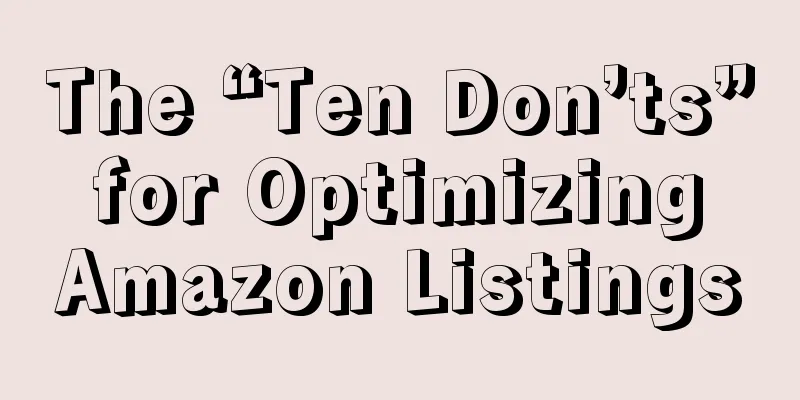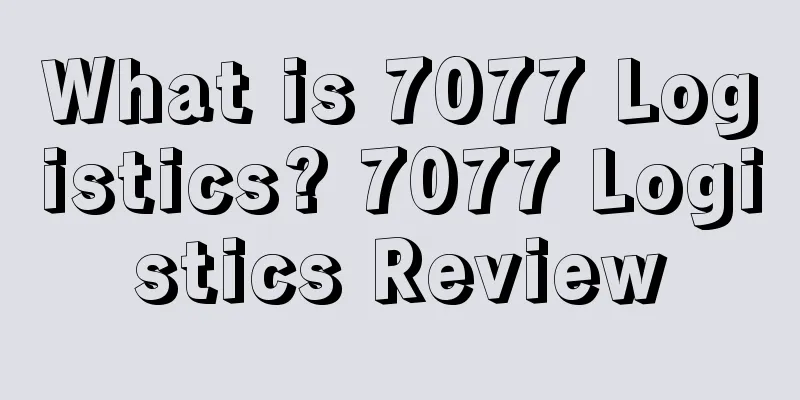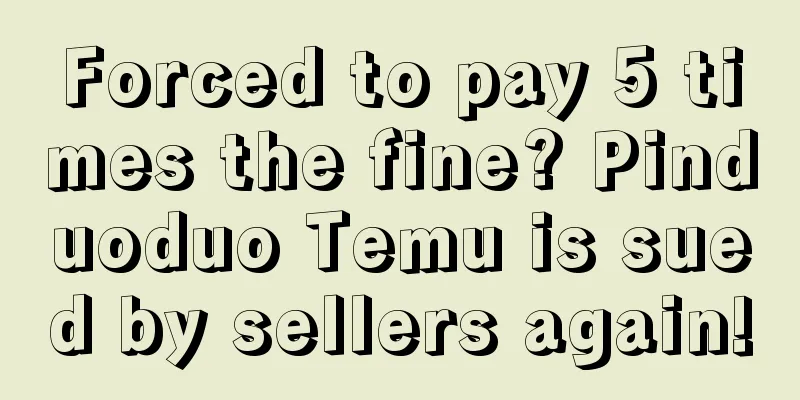The “Ten Don’ts” for Optimizing Amazon Listings

|
For Amazon sellers, the dream every day is to have a lot of orders. In order to have a lot of orders, in addition to choosing the right products, a high-quality listing is also very important. A well-optimized listing can bring huge traffic and sales.
There are many articles on how to optimize listings. Today, let’s talk about the “Ten Don’ts” for optimizing listings: ten things Amazon sellers should not do when optimizing listings.
The previous SEO strategy was to fill your listing page with all kinds of necessary and unnecessary keywords. Now this method not only fails to improve your ranking, but may also cause negative effects. Amazon does not approve of the practice of stuffing keywords. In serious cases, Amazon may delete your listing.
Be sure to include your brand name in the Amazon title. Every product title should include your brand name, which can help sellers build brand awareness. A good listing title structure is: brand name + series name + model + dimensions + unique identifier (color, capacity, packaging size, etc.).
Although many sellers add competitor brand names to their listings in order to compete for market share, it is not recommended for sellers to do so, as it will affect the seller's own brand sentiment and easily involve legal issues.
Amazon prohibits sellers from using special symbols in titles , such as ~, !, *, $, ?. Failure to comply with the requirements may result in the listing being suspended. So don’t take risks for some fancy symbols.
Although Amazon will not penalize you for repeating keywords, both titles and bullet points have character limits, so in order to maximize SEO results, sellers are advised not to repeat the same keywords.
Recently, Amazon has implemented a 200-character limit on all category titles. Amazon said in an email that in order to improve the user experience, sellers will be restricted from searching and browsing listings with titles exceeding 200 characters. Starting from July 15, when sellers create new listings, please ensure that the title length is less than 200 characters, otherwise consumers will not be able to search for your products.
Sellers can make full use of the number of characters provided by Amazon, but do not exceed the regulations, otherwise you may lose your selling privileges.
Amazon prohibits sellers from using words that could be interpreted as health claims, product claims, or intellectual property claims. Amazon will remove such listings unless the seller has the necessary documentation and certification to support them.
Vivid and attractive product images can attract customers to your page, increase product click-through rates, and ultimately increase sales. Amazon allows sellers to upload 9 pictures, but they must meet the regulations. The main picture is the most important product picture and the first picture that consumers see. According to Amazon regulations, in addition to size specifications, the main image must be as simple as possible, remove all decorations, and use a white background. If your product image does not meet the requirements, the listing will be hidden and will not appear in the search results.
After having A+ pages, many sellers ignore product descriptions, thinking that they are useless. However, in mobile searches, product descriptions will appear in the A+ page instead. Considering that 80% of users use mobile phones to shop, sellers must not forget to optimize product descriptions.
This practice seems attractive enough, and many listings have customer reviews or promotional text in product images and listings. However, this is a violation of Amazon's terms of service, and if discovered, it may result in the account being frozen.
As a seller, you must understand all the details of creating and optimizing listings to avoid violating the platform's regulations. And don't think there are any unique tricks or magical tools that can give you a perfect listing overnight . Only through constant trial and error can you find the method that suits you best. Compiled by ✎ Mary/ Statement: When reprinting this article, the title and original text must not be modified, and the source and original link must be retained. |
Recommend
Check in seconds whether Amazon's competitors have S-order phenomenon
As an Amazon seller, you should not only pay atte...
What is sellertop.com? Review of sellertop.com
Sellertop.com mainly provides high-quality cross-b...
What is Dongguan Chengpai Network Technology Co., Ltd.? Dongguan Chengpai Network Technology Co., Ltd. Review
Dongguan Chengpai Network Technology Co., Ltd. is ...
What is Quanzhou Zhongqi Network? Quanzhou Zhongqi Network Review
Quanzhou Zhongqi Network (Quanzhou Zhongqi Network...
What is Paytren? Paytren Review
Paytren, an Indonesian payment platform, is a mobi...
700 million yuan in arrears! 3,000 suppliers suffered! This Shenzhen seller was repeatedly visited by debt collectors
I believe everyone knows that in September 2020, t...
The EU will cancel the tax-free policy! Sellers are going crazy!
The impact of the United States' cancellation...
What is FamPay? FamPay Review
FamPay India Payment Platform is a payment platfor...
Amazon is striking hard: closing stores, removing shelves, and issuing warnings
A large-scale warning letter incident occurred in...
Want to sell restricted products on Amazon? Here’s how to get approved easily…
There are some categories on Amazon that sellers n...
Quantitative criteria for high success rate of Amazon product selection
text Choosing products with high success rates is ...
A big seller shared the second review skills 2021
Big seller: The second review is a means for Amazo...
Entire categories disappear on Amazon? Something big happened right after Primeday
Membership Day on the US site officially ended thi...
What is a Free Trade Agreement (FTA)? Free Trade Agreement (FTA) Review
A Free Trade Agreement is a legally binding contra...









